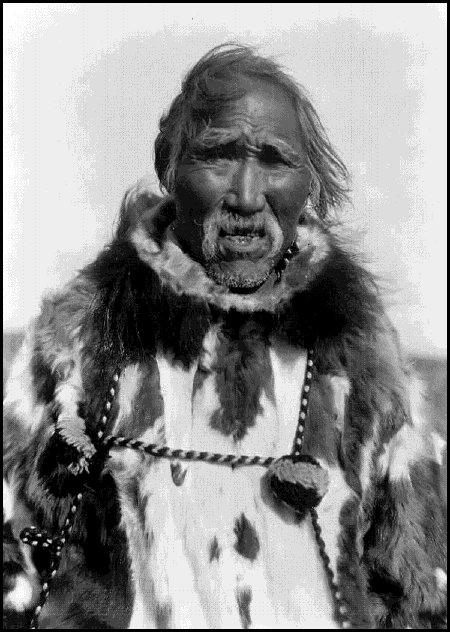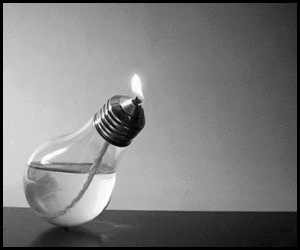The Long
Winter Darkness

-
Houses were lit by burning bear grease in a shallow bowl with a wick, or by burning long wands of split wood, one after another. Bear grease was scarce, and the hand-held wands were inconvenient, so in midwinter the dwellings were often dark after twilight faded. Faced with long wakeful hours in the blackness, people crawled into their warm beds and listened to the recounting of stories .... The narratives were reserved for late fall and the first half of winter because they were tabooed after the days began lengthening. Not surprisingly, the teller finished each story by commenting that he or she had shortened the winter: "I thought that winter had just begun, but now I have chewed off part of it."
For those in the northernmost coastal villages of Greenland, Canada, and Alaska --- where in the heart of winter, the only natural light comes from the stars, the moon, and the aurora borealis and the only source of fresh water is locked in snow and ice --- stone lamps were utterly essential for survival: among the Inuit of Greenland, "the constellation of the Great Bear is called ... pisildlat, lamp foot or stool upon which the lamp is placed."
Above the tree line, where only occasional driftwood might be available for fires, people relied almost entirely on seal oil, a more efficient fuel than reindeer fat or the fat of other land animals. Women carefully gathered every last bit of it from the carcass, scraping the skin with an ivory scoop, and they saved any oil that might drip from the lip of their lamps, which were carved of soapstone. The exact size and shape of the lamps varied from village to village, but most were elliptical --- a foot or two long --- with a thick edge. A wick of dried moss, catkins, or peat --- rubbed between the palms with a bit of fat --- would be laid in a thin line along the edge. The lamp could be tipped to feed more oil to the wick. Sometimes a slab of seal blubber hung over the bowl and fed more fat to the lamp as it melted.
If more than one family shared a snow shelter, as often happened, each possessed its own lamp, which kept family members warm and cooked their food. Its heat also dried their clothes and boots and was used to tan hides. Steam rising off the cooking pots helped the people to bend straps of wood and pieces of bone, from which they fashioned snowshoes and boxes. Most essentially, it gave them water to drink. Humans can't eat snow --- it isn't high enough in water content to prevent dehydration before it lowers the core body temperature to fatal levels. So those living in the farthest north had to melt snow for their drinking water, either directly over the flame or near it, where a chunk of snow or ice might lay on an inclined slab, its meltwater slowly running into a container.

However smoky, the lamp meant so much to families that in lean times, so as to have enough fuel for the fire, they were willing to go hungry. The fire was almost always kept alive, most often carefully guarded and tended by the woman of the household. She spent much of her day alongside it, cooking, preparing hides and skins, sewing winter clothing, and drying clothes. The flame, a few inches high, was difficult to keep clear and smokeless. In the late 1800s, anthropologist Walter Hough noted: "Lamp trimming only reaches perfection in the old women of the tribe, who can prepare a lamp so that it will give a good, steady flame for several hours, while usually half an hour is the best that can be expected. In an Eskimo tradition a woman takes down some eagle's feathers from a nail in the wall and stirs up the smoking lamp, so as to make it burn brightly." Elsewhere he wrote, "The Eskimo have no phrase expressing a greater degree of misery than 'a woman without a lamp.' After the death of a woman her lamp is placed upon her grave."
The Evolution of Artificial Light
Jane Brox
© 2010 Houghton Mifflin Harcourt